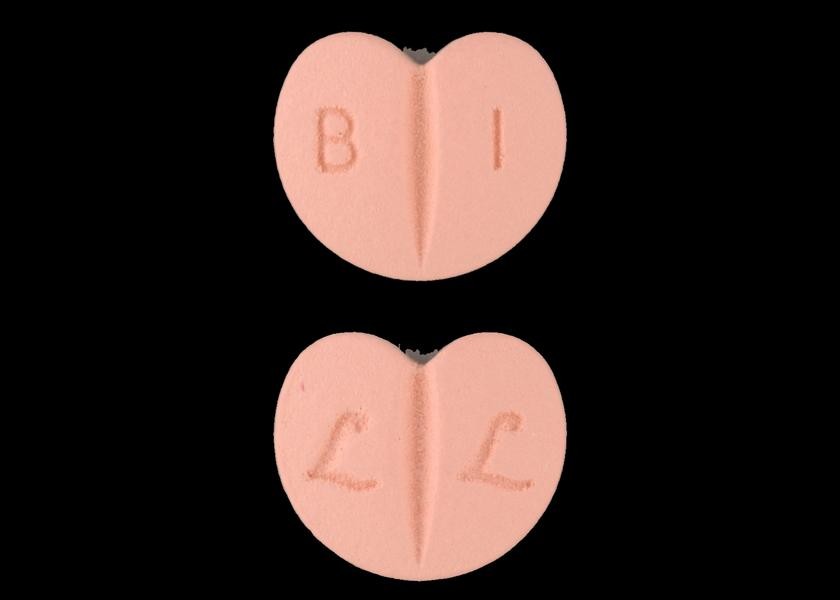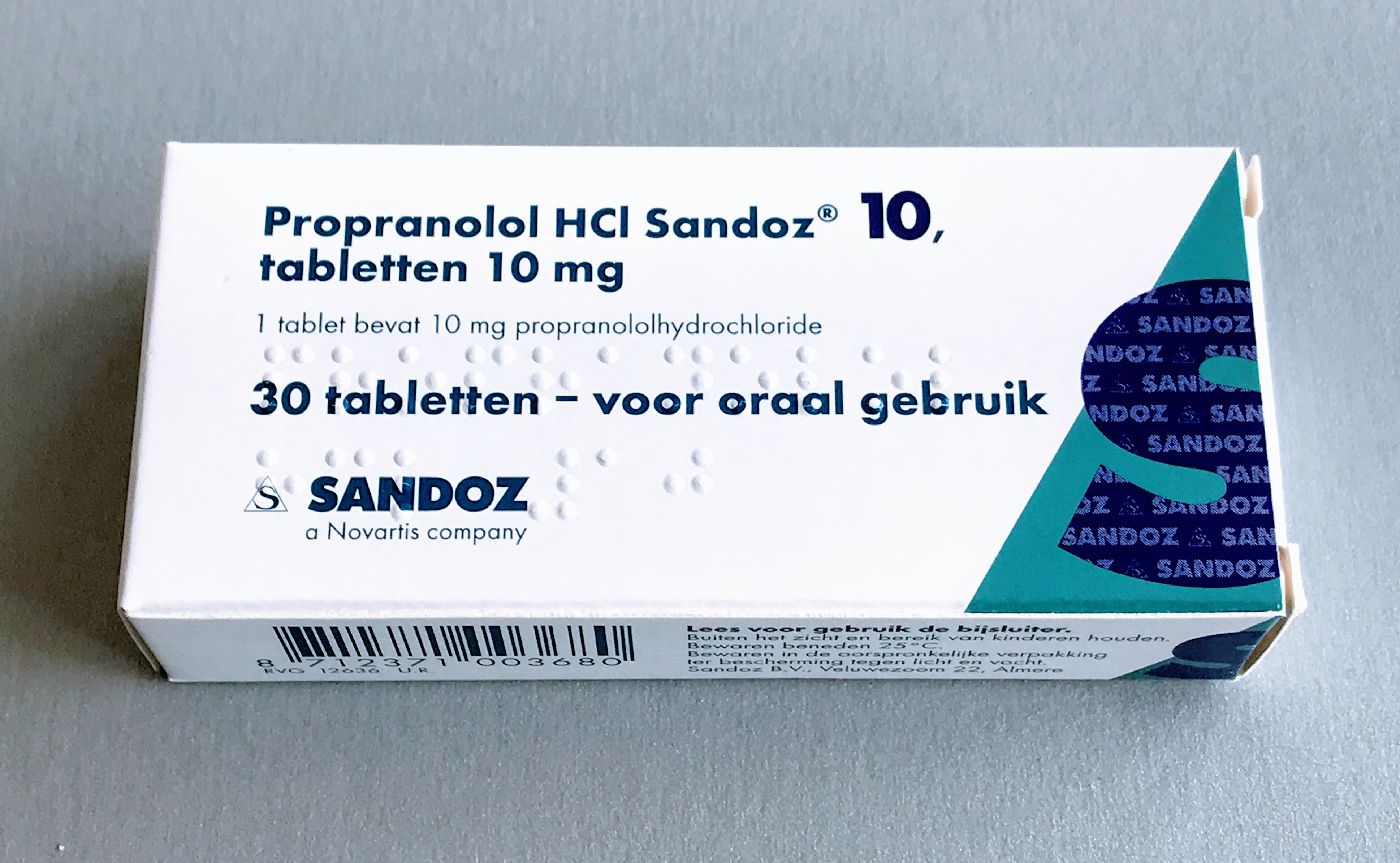|
Nadolol
Nadolol, sold under the brand name Corgard among others, is a medication used to treat hypertension, high blood pressure, angina pectoris, heart pain, atrial fibrillation, and some Channelopathy, inherited arrhythmic syndromes. It has also been used to prevent Migraine, migraine headaches and complications of cirrhosis. It is taken orally. Common side effects include dizziness, feeling tired, a slow heart rate, and Raynaud syndrome. Serious side effects may include heart failure and bronchospasm. Its use in pregnancy and breastfeeding is of unclear safety. It is a non-selective beta blocker and works by blocking β1-adrenergic receptors in the heart and β2-adrenergic receptors in blood vessels. Nadolol was patented in 1970 and came into medical use in 1978. It is available as a generic medication. In 2020, it was the 340th most commonly prescribed medication in the United States, with more than 700thousand prescriptions. Medical uses Nadolol is used to treat hypertension and ... [...More Info...] [...Related Items...] OR: [Wikipedia] [Google] [Baidu] |
Beta Blocker
Beta blockers, also spelled β-blockers, are a class of medications that are predominantly used to manage abnormal heart rhythms ( arrhythmia), and to protect the heart from a second heart attack after a first heart attack ( secondary prevention). They are also widely used to treat high blood pressure, although they are no longer the first choice for initial treatment of most people. Beta blockers are competitive antagonists that block the receptor sites for the endogenous catecholamines epinephrine (adrenaline) and norepinephrine (noradrenaline) on adrenergic beta receptors, of the sympathetic nervous system, which mediates the fight-or-flight response. Beta-adrenergic receptors are found on cells of the heart muscles, smooth muscles, airways, arteries, kidneys, and other tissues that are part of the sympathetic nervous system and lead to stress responses, especially when they are stimulated by epinephrine (adrenaline). Beta blockers interfere with the binding to th ... [...More Info...] [...Related Items...] OR: [Wikipedia] [Google] [Baidu] |
Catecholaminergic Polymorphic Ventricular Tachycardia
Catecholaminergic polymorphic ventricular tachycardia (CPVT) is an inherited genetic disorder that predisposes those affected to potentially life-threatening abnormal heart rhythms or arrhythmias. The arrhythmias seen in CPVT typically occur during exercise or at times of emotional stress, and classically take the form of bidirectional ventricular tachycardia or ventricular fibrillation. Those affected may be asymptomatic, but they may also experience blackouts or even sudden cardiac death. CPVT is caused by genetic mutations affecting proteins that regulate the concentrations of calcium within cardiac muscle cells. The most commonly identified gene is RYR2, which encodes a protein included in an ion channel known as the ryanodine receptor; this channel releases calcium from a cell's internal calcium store, the sarcoplasmic reticulum, during every heartbeat. CPVT is often diagnosed from an ECG recorded during an exercise tolerance test, but it may also be diagnosed with a ... [...More Info...] [...Related Items...] OR: [Wikipedia] [Google] [Baidu] |
Selective Beta Blockers
Beta blockers, also spelled β-blockers, are a class of medications that are predominantly used to manage abnormal heart rhythms (arrhythmia), and to protect the heart from a second heart attack after a first heart attack (secondary prevention). They are also widely used to treat high blood pressure, although they are no longer the first choice for initial treatment of most people. Beta blockers are competitive antagonists that block the receptor sites for the endogenous catecholamines epinephrine (adrenaline) and norepinephrine (noradrenaline) on adrenergic beta receptors, of the sympathetic nervous system, which mediates the fight-or-flight response. Beta-adrenergic receptors are found on cells of the heart muscles, smooth muscles, airways, arteries, kidneys, and other tissues that are part of the sympathetic nervous system and lead to stress responses, especially when they are stimulated by epinephrine (adrenaline). Beta blockers interfere with the binding to the receptor of ... [...More Info...] [...Related Items...] OR: [Wikipedia] [Google] [Baidu] |
Beta Blocker
Beta blockers, also spelled β-blockers, are a class of medications that are predominantly used to manage abnormal heart rhythms ( arrhythmia), and to protect the heart from a second heart attack after a first heart attack ( secondary prevention). They are also widely used to treat high blood pressure, although they are no longer the first choice for initial treatment of most people. Beta blockers are competitive antagonists that block the receptor sites for the endogenous catecholamines epinephrine (adrenaline) and norepinephrine (noradrenaline) on adrenergic beta receptors, of the sympathetic nervous system, which mediates the fight-or-flight response. Beta-adrenergic receptors are found on cells of the heart muscles, smooth muscles, airways, arteries, kidneys, and other tissues that are part of the sympathetic nervous system and lead to stress responses, especially when they are stimulated by epinephrine (adrenaline). Beta blockers interfere with the binding to th ... [...More Info...] [...Related Items...] OR: [Wikipedia] [Google] [Baidu] |
Atenolol
Atenolol is a beta blocker medication primarily used to treat high blood pressure and angina, heart-associated chest pain. Although used to treat high blood pressure, it does not seem to improve mortality rate, mortality in those with the condition. Other uses include the prevention of migraines and treatment of certain arrhythmia, irregular heart beats. It is taken oral administration, orally (by mouth) or by intravenous injection (injection into a vein). It can also be used with other blood pressure medications. Common side effects include fatigue (medical), feeling tired, heart failure, dizziness, depression (mood), depression, and shortness of breath. Other serious side effects include bronchospasm, bronchial spasm. Use is not recommended during pregnancy and alternative drugs are preferred when breastfeeding. It works by blocking Beta-1 adrenergic receptor, β1-adrenergic receptors in the heart, thus decreasing heart rate, cardiac contractility, force of heart beats, and b ... [...More Info...] [...Related Items...] OR: [Wikipedia] [Google] [Baidu] |
Cirrhosis
Cirrhosis, also known as liver cirrhosis or hepatic cirrhosis, chronic liver failure or chronic hepatic failure and end-stage liver disease, is a chronic condition of the liver in which the normal functioning tissue, or parenchyma, is replaced with scar tissue (fibrosis) and regenerative nodule (medicine), nodules as a result of chronic liver disease. Damage to the liver leads to repair of liver tissue and subsequent formation of scar tissue. Over time, scar tissue and nodules of regenerating hepatocytes can replace the parenchyma, causing increased resistance to blood flow in the liver's capillaries—the hepatic sinusoids—and consequently portal hypertension, as well as impairment in other aspects of liver function. The disease typically develops slowly over months or years. Stages include compensated cirrhosis and decompensated cirrhosis. Early symptoms may include Fatigue (medicine), tiredness, Asthenia, weakness, Anorexia (symptom), loss of appetite, weight loss, unexpla ... [...More Info...] [...Related Items...] OR: [Wikipedia] [Google] [Baidu] |
Blood Vessel
Blood vessels are the tubular structures of a circulatory system that transport blood throughout many Animal, animals’ bodies. Blood vessels transport blood cells, nutrients, and oxygen to most of the Tissue (biology), tissues of a Body (biology), body. They also take waste and carbon dioxide away from the tissues. Some tissues such as cartilage, epithelium, and the lens (anatomy), lens and cornea of the eye are not supplied with blood vessels and are termed ''avascular''. There are five types of blood vessels: the arteries, which carry the blood away from the heart; the arterioles; the capillaries, where the exchange of water and chemicals between the blood and the tissues occurs; the venules; and the veins, which carry blood from the capillaries back towards the heart. The word ''vascular'', is derived from the Latin ''vas'', meaning ''vessel'', and is mostly used in relation to blood vessels. Etymology * artery – late Middle English; from Latin ''arteria'', from Gree ... [...More Info...] [...Related Items...] OR: [Wikipedia] [Google] [Baidu] |
Off-label
Off-label use is the use of pharmaceutical drugs for an unapproved indication (medicine), indication or in an unapproved age group, dose (biochemistry), dosage, or route of administration. Both prescription drugs and over-the-counter drugs (OTCs) can be used in off-label ways, although most studies of off-label use focus on prescription drugs. Off-label use is very common and generally legal unless it violates ethical guidelines or safety regulations. The ability to prescribe drugs for uses beyond the officially approved indications is commonly used to good effect by healthcare providers. For example, methotrexate is commonly used off-label because its immunomodulatory effects relieve various disorders. However, off-label use can entail health risks and differences in legal liability. Pharmaceutical marketing, Marketing of pharmaceuticals for off-label use is usually prohibited. Indications and labeling laws An ''Indication (medicine), indication'' is when a drug is medically appro ... [...More Info...] [...Related Items...] OR: [Wikipedia] [Google] [Baidu] |
Bisoprolol
Bisoprolol, sold under the brand names Bisotab, Concor, Corbis and Zebeta among others, is a beta blocker which is selective for the beta-1 receptor and used for cardiovascular diseases, including tachyarrhythmias, high blood pressure, angina, and heart failure. It is taken Oral administration, by mouth. Common side effects include headache, feeling tired, diarrhea, and peripheral edema, swelling in the legs. More severe side effects include worsening asthma, blocking the ability to recognize low blood sugar, and worsening heart failure. There are concerns that use during pregnancy may be harmful to the baby. Bisoprolol was patented in 1976 and approved for medical use in 1986. It was approved for medical use in the United States in 1992. Bisoprolol is on the WHO Model List of Essential Medicines, World Health Organization's List of Essential Medicines and is available as a generic medication. In 2022, it was the 249th most commonly prescribed medication in the United State ... [...More Info...] [...Related Items...] OR: [Wikipedia] [Google] [Baidu] |
Propranolol
Propranolol is a medication of the beta blocker class. It is used to treat hypertension, high blood pressure, some types of cardiac dysrhythmia, irregular heart rate, thyrotoxicosis, capillary hemangiomas, akathisia, performance anxiety, and essential tremors, as well to prevent migraine headaches, and to prevent further heart problems in those with angina or previous myocardial infarction, heart attacks. It can be taken oral administration, orally or by intravenous injection. The formulation that is taken orally comes in short-acting and long-acting versions. Propranolol appears in the blood after 30 minutes and has a maximum effect between 60 and 90 minutes when taken orally. Common side effects include nausea, abdominal pain, and constipation. It may worsen the symptoms of asthma. Propranolol may cause teratogen, harmful effects for the baby if taken during pregnancy; however, its use during breastfeeding is generally considered to be safe. It is a non-selective beta block ... [...More Info...] [...Related Items...] OR: [Wikipedia] [Google] [Baidu] |
Ventricular Arrhythmia
Arrhythmias, also known as cardiac arrhythmias, are irregularities in the heartbeat, including when it is too fast or too slow. Essentially, this is anything but normal sinus rhythm. A resting heart rate that is too fast – above 100 beats per minute in adults – is called tachycardia, and a resting heart rate that is too slow – below 60 beats per minute – is called bradycardia. Some types of arrhythmias have no symptoms. Symptoms, when present, may include palpitations or feeling a pause between heartbeats. In more serious cases, there may be lightheadedness, passing out, shortness of breath, chest pain, or decreased level of consciousness. While most cases of arrhythmia are not serious, some predispose a person to complications such as stroke or heart failure. Others may result in sudden death. Arrhythmias are often categorized into four groups: extra beats, supraventricular tachycardias, ventricular arrhythmias and bradyarrhythmias. Extra beats include prematu ... [...More Info...] [...Related Items...] OR: [Wikipedia] [Google] [Baidu] |




